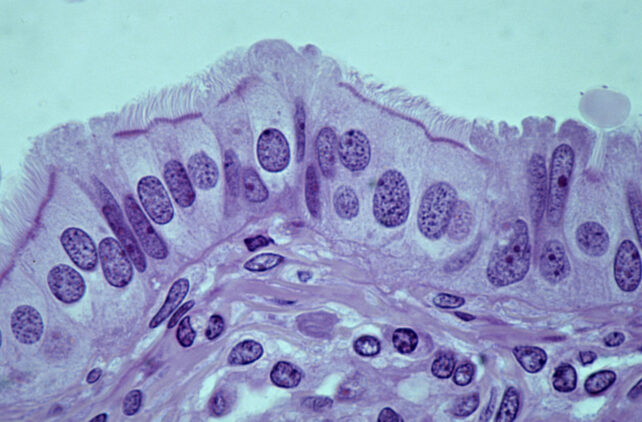Scientists working with mice have zeroed in on the cells answerable for the commonest and aggressive type of ovarian most cancers.
If the invention within the oviducts (uterine tubes) of mice extends to the fallopian tubes of people, it might present early detection of lethal high-grade serous ovarian carcinomas (HGSOC), which declare the lives of most sufferers inside simply 5 years of detection.
Greater than a decade in the past, proof began accumulating to recommend many ovarian cancers in people don’t begin within the ovaries however within the fallopian tubes.
Within the years since, scientists have discovered lesions on the ends of fallopian tubes which might be genetically tied to tumors within the ovaries. Nonetheless, the precise cells inside the fallopian tubes which might be answerable for HGSOC are unknown.
Typically, there are not any signs in any respect to tip off sufferers or docs, and in the present day, about 80 p.c of HGSOC circumstances are detected at a complicated stage when therapy choices are restricted.
“Detection and therapy of HGSOC at earlier levels may very well be essential to enhancing the prognosis of sufferers with this malignancy,” clarify researchers led by Cornell College pathologist Alexander Nikitin.
“Nonetheless, identification of recent diagnostic markers and therapeutic targets is hindered by our insufficient information in regards to the cells through which HGSOC originates and the mechanisms underlying illness initiation.”
A 2013 examine by Nikitin and colleagues recognized stem cells within the ovaries that may result in HGSOC, however their latest examine on mice is the primary to search out cancer-prone cells within the oviduct.
In truth, Nikitin and his staff have characterised and listed all the cell varieties discovered within the oviduct for the primary time.
“The query was, to what extent all the cells contribute to ovarian most cancers,” explains Nikitin.
In contrast to within the ovaries, essentially the most cancer-prone tissues within the mouse oviducts weren’t stem cells.
As a substitute, the models most vulnerable to most cancers had been pre-ciliated cells. These are transitional cells which might be on their solution to changing into ciliated cells from stem cells. As soon as they kind quick, hair-like membranes, they assist push oocytes alongside the mouse’s oviduct, or by means of fallopian tubes in people.

Two genetic mutations related to HGSOC, nonetheless, appear to trigger these pre-ciliated cells some bother.
The staff discovered that when the mutations are current in mice, the pre-ciliated cells within the oviduct result in environment friendly most cancers formation.
The outcomes recommend there’s a hyperlink between the regulation of cilia formation within the uterine tubes and ovarian most cancers.
Curiously, points with ciliogenesis are additionally linked to pancreatic most cancers.
If the cells that trigger many circumstances will be recognized in people, the invention might save quite a few lives sooner or later.
Additional research are actually wanted to discover the mechanisms behind ovarian tumor formation, and to discover whether or not different genetic mutations related to HGSOC have related or totally different results.
“We not solely recognized cells the place the most cancers originates,” says Nikitin, “however we recognized mechanisms which will be probably used for brand spanking new therapeutics and new diagnostic instruments.”
The examine was printed in Nature.





